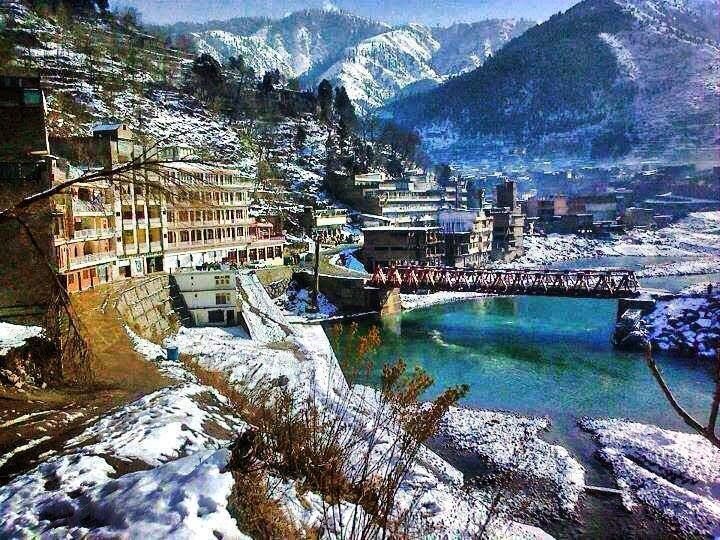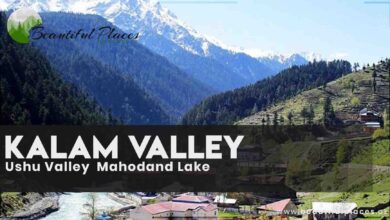Province Khyber Pakhtunkhwa (KPK)
Before being called Khyber Pakhtunkhwa (KPK), this region was called Sarhad, Gandara, Bigram, Pishklawati, and other names. According to the history of the province of KPK (Khyber Pakhtunkhwa), it is the cradle of ancient human civilization.
In fact, it is the biggest center of Buddhism. The archaeological remains of Swat, Takht Bhai, and Charsadda are witnesses of the promotion of Buddhism in this area.

Key information about Khyber Pakhtunkhwa
| Attribute | Khyber Pakhtunkhwa |
|---|---|
| Location | Khyber Pakhtunkhwa (KP) is a province in Pakistan, situated in the northwestern region of the country. |
| Capital | Peshawar is the provincial capital of KP. |
| Area | KP covers an area of approximately 101,741 square kilometers, making it one of the four provinces of Pakistan. |
| Population | As of the last available census data, KP is home to over 35 million people, contributing significantly to Pakistan’s population. |
| Geography | The province boasts diverse topography, including mountains, valleys, and plains. The towering peaks of the Hindu Kush and the Sulaiman Mountains are prominent features. |
| Climate | KP experiences varying climates, from the mountainous cold of its northern regions to the more temperate climate in its southern areas. |
| Culture | The region is rich in Pashtun culture, traditions, and languages, and it has a profound influence on the art, music, and way of life in KP. |
| Historical Sites | KP is known for its historical significance, with sites like the Buddhist archaeological remains in Takht-i-Bahi, the ancient city of Taxila, and the Badshahi Mosque in Peshawar. |
| Economy | Agriculture, trade, and industry play a significant role in KP’s economy. The province is famous for its production of fruits, particularly apples and apricots. |
| Education | KP is home to numerous educational institutions, including the University of Peshawar and Khyber Medical University. |
| Healthcare | The province provides healthcare services through a network of hospitals, clinics, and medical facilities, ensuring access to medical care for its residents. |
A brief History of Khyber Pakhtunkhwa (KPK)
There were thousands of Buddhism monasteries and worship places. Then, the tribal era came. The tribal chiefs of different tribes were used to rule this region in the form of small independent governments.
Mehmood Ghaznavid came into Punjab and KPK after defeating king Jay Pal. In 1191, Shahab-ud-Din Gori included this area in his kingdom. Taj-ud-Din Yaldoz, Qutub-ud-Din Aibek, and Al-Tamsh governed this area too.
In 1261, Khwarazm Shah after being defeated by Changez Khan fled away via the Khyber Pass of the Province KPK. Changez Khan chased him till Peshawar. But he returned back from Peshawar.
After overcoming Khilji, Tughluq, and Ameer Taimoor, Babur defeated Ibrahim Lodhi in 1526, and KPK was included in the Mughal monarchy. It remained divided into different parts till 1848 after the fall of the Mughal regime.
After the Sikh rule, the East India Company included Peshawar, Hazara, Kohat, Bannu, Dera Ismail Khan, and Dera Ghazi Khan in the Punjab Province. Furthermore, Malakand and the other four agencies were also given under the administration of Punjab.
In 1901, viceroy India Lord Curzon parted Peshawar, Hazara, Kohat, Bannu, and Dera Ismail Khan from Punjab and made it a separate province named Northern Western Frontier Province (NWFP).
History is witnessed that Pathans have never accepted the British regime. When the struggle for independence began, Pathans took an active part in every movement for freedom from Britishers. The people of the province also supported the ideology of Pakistan.
In 1930, the Residents of the province raised their voices. On 30th April, hundreds of freedom fighters sacrificed their lives in the Qissa Khawani Bazaar of Peshawar. Despite the unarmed, they ran over the tanks and armored vehicles.
In 1947, When Lord Mountbatten came to Peshawar for an assessment of the situation, about one lac Pathans were carrying the Muslim League Flag near the fort and chanting slogans of “Pakistan Zindabad”. In 1947, a month before the creation of Pakistan, 2874 votes were cast in favor of India and 189,240 for Pakistan.
Tribal and non-tribal areas were under the administration of the Federal government of the province. They were called Bajaur Agency, Mohmand Agency, Kurram Agency, Aurak agency, Zai agency, Northern Waziristan, Southern Waziristan, tribal areas, and Fata. However, Frontier Region (FR) Peshawar, FR Bannu, FR Dera Ismail Khan, FR Kohat, were the non-tribal areas.
In these areas, the government of Pakistan in coordination with local tribes maintains peace and protects the borders. These people sort out their issues and clashes in Jirga (an assembly of local chiefs and leaders to solve the disputes of tribal people). Now, these areas are part of KPK.
Tourist Attractions in KPK
From the tourism point of view, the province of Khyber Pakhtunkhwa (KPK) is bestowed with high mountain ranges, mountain passes, charming lakes, waterfall, cascades, and a healthy and pleasant environment.
Abbottabad, Nathia Gali, Kaghan valley, Swat valley, Chitral valley, Kafiristan, Koh Suleman, Koh Hindukush, Khyber Pass, Tochi Pass, Gomel Pass, Lowari Pass, Kurram Pass, river Indus, river Kanhar, river Haru, river Swat, river Sarn, and river Chitral are worth mentioning sites.

There are numerous minerals in the hilly areas of the province. Swat valley has emerald stones Chitral has coal and mica mines. The gums of elevated mountains are sold as Salajeet a precious medicine.
Nature’s Gifts and Wildlife
Valuable herbs such as Violet, cumin, mica, hyacinth, and poison ivy are common here. In addition to Cedar, pine, bark, and poplar trees, there are wild animals like cheetah, bears, Markhor, and sheep.
Malam Jabba
Skiing Paradise: Malam Jabba is a popular skiing resort situated in the Swat Valley. It offers winter sports enthusiasts a thrilling experience with its well-maintained ski slopes.
Swat Valley
The Switzerland of Pakistan: Known as the “Switzerland of Pakistan,” Swat Valley is celebrated for its lush green valleys, meandering rivers, and the enchanting Malam Jabba.
Takht-i-Bahi
Buddhist Heritage: Takht-i-Bahi is an ancient Buddhist archaeological site with well-preserved stupas, monasteries, and artifacts, providing a glimpse into the region’s rich history.
Peshawar
Cultural Melting Pot: Peshawar, the provincial capital, is a city with a deep cultural heritage. It’s a hub for exploring traditional bazaars, historic sites like the Qissa Khwani Bazaar, and culinary delights.
Taxila
Ancient Remnants: The city of Taxila, a UNESCO World Heritage Site, is home to the Taxila Museum and a treasure trove of archaeological remains from the Gandhara civilization.
Kalam Valley
Heavenly Abode: Kalam Valley is known for its idyllic landscapes, pristine rivers, and alpine forests. It’s a favorite spot for trekkers and nature lovers.
Nathiagali
Hill Station Serenity: Nathiagali is a serene hill station with dense forests, providing a refreshing escape from the hustle and bustle of city life.
Kumrat Valley
Hidden Gem: Kumrat Valley remains one of KP’s hidden gems, with its picturesque meadows, wooden bridges, and a sense of untouched beauty.
Mahodand Lake
Alpine Beauty: Mahodand Lake is a stunning glacial lake surrounded by lush meadows, making it an excellent destination for picnics and boating.
Shahi Bagh
Historical Park: Shahi Bagh in Peshawar is a historical garden with a rich past. It’s a beautiful place to explore, unwind, and connect with the city’s history.
Jalozai Camp
Bird Watching: Jalozai Camp is a birdwatcher’s paradise, known for its avian diversity, offering a unique experience for nature enthusiasts.
Historical Treasures of Khyber Pakhtunkhwa
Peshawar Museum
Archaeological Archive: The Peshawar Museum is a treasure trove of Gandharan art and history, housing sculptures, pottery, and artifacts that shed light on the region’s past.
Udegram Buddhist Monastery
Monastic Marvel: Udegram Monastery, near Mingora, Swat, features an impressive stupa and ancient Buddhist relics.
Jamal Garhi
Ancient Stupas: Jamal Garhi is an archaeological site known for its group of Buddhist stupas and monastic cells, showcasing the region’s Buddhist heritage.
Balahisar Fort
Historic Fortress: Located in Peshawar, Balahisar Fort has witnessed various empires and stands as a testament to the region’s tumultuous history.
Butkara Stupa
Buddhist Relics: The Butkara Stupa, near Mingora, is an ancient Buddhist structure with inscriptions and carvings that offer a glimpse into the past.
Charsadda
Ancient Settlement: Charsadda is an area of historical importance, with sites like Pushkalavati, believed to be the ancient capital of Gandhara.
Bala Hissar Fort
Fortress of Ages: Located in Peshawar, this fort has served various rulers over centuries, from the Greeks to the Mughals, and now stands as a historical landmark.
Khyber Pakhtunkhwa’s historical sites are a testament to its deep-rooted heritage, with a remarkable blend of Buddhist, Greek, and Mughal influences. Exploring these sites offers a journey through time and a better understanding of the region’s diverse history.
Educational Institutions
- University of Peshawar
- Ghulam Ishaq Khan Institute of Engineering Sciences and Technology (GIKI)
- Edwardes College Peshawar
- Islamia College Peshawar
- Abbottabad Public School
Restaurants
- BBQ Tonight Peshawar
- Monal Peshawar
- The Charcoal BBQ Restaurant Abbottabad
- Jalil Kabab House Peshawar
- Madina Restaurant Swat
Hospitals
- Lady Reading Hospital, Peshawar
- Hayatabad Medical Complex, Peshawar
- Khyber Teaching Hospital, Peshawar
- Ayub Teaching Hospital, Abbottabad
- Saidu Group of Teaching Hospitals, Swat
Frequently asked questions (FAQs)
Q: What is the geographical location of Khyber Pakhtunkhwa?
A: Khyber Pakhtunkhwa is situated in the northwestern region of Pakistan, bordering Afghanistan to the west and north, and sharing boundaries with several other Pakistani provinces.
Q: What are the major cities in KP?
A: Some of the major cities in Khyber Pakhtunkhwa include Peshawar (the provincial capital), Abbottabad, Swat, Mardan, and Dera Ismail Khan.
Q: What is the significance of Peshawar in KP?
A: Peshawar is the provincial capital of KP and is known for its rich history, cultural diversity, and bustling markets. It serves as an important administrative and economic center.
Q: Are there any historical sites in KP worth visiting?
A: Yes, KP is home to several historical sites, including Takht-i-Bahi, Taxila, and Butkara Stupa, which provide insights into the region’s ancient heritage.
Q: What are the famous dishes in KP cuisine?
A: KP is renowned for its flavorful cuisine, including dishes like Peshawari karahi, chapli kebabs, and sajji. These dishes are a must-try for food enthusiasts.
Q: What is the significance of educational institutions in KP?
A: KP is home to prestigious educational institutions like the University of Peshawar, GIKI, and Islamia College, contributing to academic excellence in the region.
Q: Are there any notable healthcare facilities in KP?
A: Yes, KP has well-established healthcare institutions like Lady Reading Hospital, Hayatabad Medical Complex, and Ayub Teaching Hospital, providing medical services and training.
Q: What is the climate like in KP?
A: The climate in KP varies from region to region. In the north, there are cold, snowy winters, while the southern parts experience hot summers. The Swat Valley has a milder climate, making it a popular summer destination.
Q: Can I explore natural beauty in KP?
A: Absolutely! KP is known for its stunning natural landscapes, from the Swat Valley’s lush greenery to the serene Nathiagali hill station. Nature lovers will find plenty to explore.
Q: How do I reach KP from other parts of Pakistan?
A: KP is accessible by road and air. Major cities like Peshawar have airports, and a well-connected road network links KP to the rest of the country.
Q: Are there cultural festivals and events in KP?
A: Yes, KP hosts various cultural festivals and events, including the Kalash Festival in Chitral and the Jashn-e-Khyber in Peshawar, where you can experience the region’s vibrant culture.
Wind Up Lines
Khyber Pakhtunkhwa is considered a hub of tourist spots and recreational destinations. It is enriched with natural beauty, historical landmarks, and natural resources. Its deep-rooted history, culture, traditions, norms, food, and festivals attract the holiday makers.



